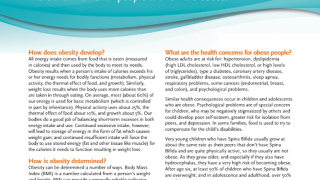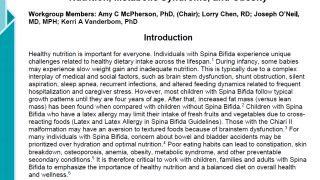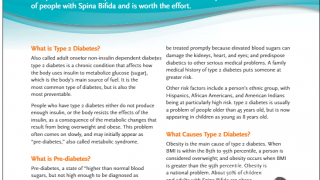Know the signs. Hypertension can often go undetected.
What is hypertension?
Hypertension also called high blood pressure, is a condition in which the arteries of the body have too much resistance to the force of blood pumping against them. Blood pressure is measured by using a sphygmomanometer (blood pressure cuff). A blood pressure measurement has two components:
- the systolic pressure is the reading of the pressure when the blood is being actively pumped by the heart and the
- the diastolic pressure is the reading of the resting tone of the blood vessels when the heart is refilling with blood.
In adults, a blood pressure over 120/80 is abnormal. The blood pressure that is abnormal in children depends on age and sex. Your child’s pediatrician will have upper limits of normal available to him/her. Blood pressure should be taken at least three times to establish the diagnosis of hypertension. Many people have white coat hypertension, which means their blood pressure may elevate when they visit a doctor and are nervous. This is especially true for children and adults with Spina Bifida, because they often have had negative experiences with doctor visits. For this reason, blood pressure should be taken in a setting when someone might not be as nervous. Approximately 40% of people with white coat hypertension eventually develop true hypertension that requires treatment, but 60% do not.
What are symptoms of hypertension?
Hypertension often presents with no symptoms. A low-grade headache and fatigue may be the only indicator.
What are the causes of hypertension?
It is unclear whether people with Spina Bifida are at increased risk for hypertension, based on kidney scarring, but they may be. If a blood pressure of someone with Spina Bifida is in the high range, an evaluation for kidney causes in this population should be undertaken. If anxiety is a factor, treatment of anxiety can lower blood pressure. This is common in people who have many stressors in their daily lives and is the case for some people with Spina Bi da.
What are the causes of in the general population?
Essential hypertension is present in people with a family history of the condition. This means that other causes have not been identified. High cholesterol is associated with renal artery narrowing and nephrosclerosis, two common causes of hypertension in older adults.
What are the dangers of hypertension?
Hypertension is associated with heart attacks and strokes. Unmanaged hypertension can shorten someone’s life by several years.
What is the treatment of hypertension?
The cause of hypertension has to be identified rest, particularly in young people. The following healthy lifestyles changes can significantly improve blood pressure:
1. Dietary salt restriction
2. Weight loss
3. Stress management
4. Regular exercise
5. Limiting alcohol intake and smoking
What are the risk factors for hypertension?
1. Family history
2. Obesity
3. High salt intake
4. Sleep apnea
5. High stress
6. Excessive alcohol consumption
7. Smoking
8. High cholesterol and triglycerides
All of these risk factors can be treated and reduced. If they are treated in an early stage, and if hypertension is reversed, then a normal lifespan is likely. Treatment with medications for many people is necessary. Usually, physicians begin by treating hypertension with a diuretic; but many other kinds of medications are also needed for patients. People with Spina Bifida are more prone to hypertension than in the general population, we think because they have a higher frequency of some risk factors. It is therefore important to take blood pressure issues seriously and sooner, rather than later. For adults, internal medicine specialists are experts at diagnosing and treating hypertension. Pediatric cardiologists or nephrologists treat more complicated pediatric cases.
This information does not constitute medical advice for any individual. As special cases may vary from the general information presented here, SBA advises readers to consult a qualified medical or other professional on an individual basis.
Tags



